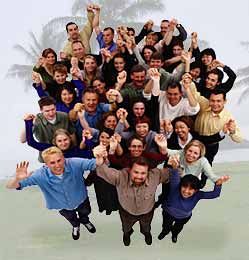Hawaii
Personal Injury Lawyers
Hawaii personal injury lawyers handle cases from Honolulu to
Hilo and from Kauai to Maui and everywhere in-between. Hawaii
personal injury lawyers and the clients they represent must follow
the 51-percent modified comparative negligence rule. This rule
states that the injured party cannot receive damages if they are
51-percent or more at fault.

The Hawaii State Bar Association (HSBA) was founded in 1899 and
incorporated in 1985 as a non-profit trade organization under
Section 501(c)(6) of the Internal Revenue Code.
In November 1989, the Hawaii Supreme Court ordered the creation
of a unified bar and designated it as the administrative entity
of the unified bar. In so doing, the Supreme Court democratized
the governance of the legal profession by conferring upon the
HSBA the power and responsibility to aid the Court in regulating,
maintaining, and improving the legal profession. Imbued with a
new sense of direction and purpose, the newly constituted HSBA
developed its very first mission statement and goals for the organization.
The mission of the HSBA is "To unite and inspire Hawaii's lawyers
to promote justice, serve the public, and improve the legal profession."
The HSBA Board consists of twenty voting members (four officers,
fifteen directors, and YLD President) as well as the standing
committee chairs, ABA delegate, neighbor island representatives,
and the president of the Hawaii State Trial Judges Association.

Hawaii Personal
Injury Lawyers
The Hawaii personal injury lawyers need also be aware of the
"modified" part of this comparative negligence rule.
If their client is less than 51-percent at fault, but do have
some percentage of responsibility for the injury, their damage
award will be reduced by that percentage.
Another area in which Hawaii personal injury lawyers need to
be aware is the state's modified joint and several liability rule.
This rule assumes that more than one defendant is responsible
for injury to the plaintiff to a certain degree or percentage.
Some have criticized Hawaii's joint and several liability rule
because it penalizes the defendant with the deepest pockets most
regardless of the percentage of their responsibility towards the
plaintiff's injuries. Proponents of the rule say that it assures
that the plaintiff and attorneys will be paid what is due.
|


